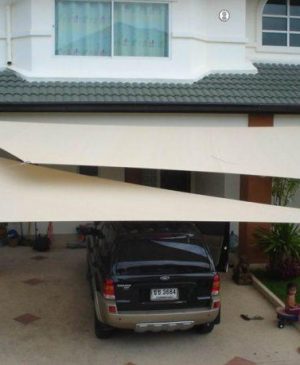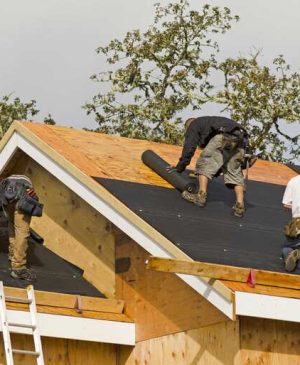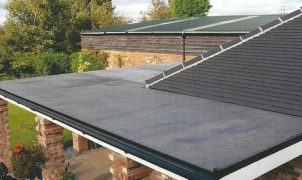In the world of HVAC (heating, ventilation, and air conditioning) systems, the importance of proper maintenance cannot be overstated. Well-maintained HVAC systems not only operate more efficiently but also extend the lifespan of the equipment, reduce energy costs, and enhance indoor air quality. As technology advances, new trends are emerging that are transforming the way HVAC systems are maintained, making the process more efficient, sustainable, and user-friendly. In this article, we will explore some of the latest trends in HVAC maintenance that are changing the industry and reshaping the way we think about heating and cooling systems.
1. Predictive Maintenance: The Rise of IoT and Smart Sensors
One of the most significant shifts in HVAC maintenance is the move toward predictive maintenance. Predictive maintenance uses advanced technology such as the Internet of Things (IoT), smart sensors, and artificial intelligence (AI) to monitor the performance of HVAC systems in real-time. Rather than relying on traditional scheduled maintenance or reacting to breakdowns, predictive maintenance leverages data to predict when a component is likely to fail and schedules repairs before a breakdown occurs.
Smart sensors embedded in HVAC units can track a range of metrics, including temperature, pressure, vibration, and humidity levels. The data is sent to a cloud-based platform, where AI algorithms analyze it and identify potential issues. This predictive approach allows for timely interventions, preventing costly repairs and downtime while maximizing system performance. HVAC technicians can use this information to replace parts only when necessary, improving the overall efficiency and reliability of the system.
For building managers or homeowners, predictive maintenance provides peace of mind, knowing that their HVAC systems are being continuously monitored and that any potential issues will be caught before they become major problems.
2. AI-Driven Diagnostics and Automation
Artificial intelligence is also transforming the diagnostic process in HVAC systems. Traditionally, technicians had to rely on their experience and knowledge to troubleshoot problems, which could sometimes lead to delays or errors. However, AI-powered tools are now enabling HVAC professionals to diagnose issues with greater accuracy and speed.
AI-driven diagnostic systems can analyze historical data from HVAC units, review past service records, and compare current performance to ideal standards. By doing so, these systems can quickly pinpoint the root cause of problems, whether it’s a faulty thermostat, refrigerant leak, or malfunctioning motor. This makes it easier for technicians to provide targeted solutions, reducing downtime and enhancing overall service quality.
In addition to improving diagnostics, AI is also playing a key role in automating HVAC maintenance tasks. For example, AI can optimize system settings based on real-time data, adjusting temperature and airflow levels to ensure peak performance. This not only saves energy but also reduces wear and tear on the system, extending its lifespan.
3. Green and Sustainable HVAC Solutions
As environmental concerns continue to rise, sustainability has become a driving force in the HVAC industry. New trends in HVAC maintenance are focusing on reducing energy consumption, lowering carbon footprints, and promoting greener technologies. This shift is being fueled by both government regulations and the growing demand from consumers for more eco-friendly solutions.
One of the most notable trends is the use of environmentally friendly refrigerants. Traditional refrigerants, such as R-22, have been phased out due to their harmful effects on the ozone layer and contribution to global warming. In their place, newer refrigerants such as R-410A and R-32 are being adopted, which have a lower global warming potential (GWP) and are more energy-efficient.
Additionally, HVAC systems are now being designed with energy-saving features like variable-speed motors, which adjust the airflow based on demand, reducing energy consumption. Regular maintenance of these systems, including cleaning filters, checking refrigerant levels, and ensuring the system is properly sealed, can further enhance efficiency and sustainability.
Building owners are also increasingly investing in renewable energy sources to power their HVAC systems. Solar panels, wind turbines, and geothermal systems are being integrated into HVAC setups to reduce reliance on fossil fuels. Regular maintenance of these renewable energy systems ensures their efficiency and longevity, contributing to both energy savings and sustainability goals.
4. Ductless HVAC Systems: A Growing Trend
Ductless heating and cooling systems have become increasingly popular due to their efficiency, ease of installation, and flexibility. Unlike traditional HVAC systems that rely on ductwork to distribute air, ductless systems, such as mini-split systems, use individual units placed in different rooms or zones, offering personalized temperature control.
One of the main advantages of ductless systems is their energy efficiency. Because they don’t require ducts, there is no energy loss from air traveling through long, insulated pipes. This can lead to significant savings on energy bills, especially in homes or buildings with multiple zones. Regular maintenance for ductless systems typically involves cleaning the air filters and checking refrigerant levels, but because the systems are smaller and more compact, they often require less extensive maintenance than traditional HVAC systems.
As demand for ductless HVAC systems continues to grow, maintenance companies are focusing on training technicians to properly install and maintain these systems, ensuring they perform at optimal levels.
5. Air Quality Monitoring and Maintenance
Indoor air quality has become a top priority for homeowners, especially in the wake of the COVID-19 pandemic, which has highlighted the importance of clean air in indoor spaces. HVAC systems play a crucial role in maintaining good air quality by circulating filtered air throughout a building. As a result, many HVAC maintenance trends are now focusing on air quality monitoring and improvement.
Advanced air quality monitoring systems can now be integrated into HVAC units to measure levels of pollutants such as carbon dioxide, volatile organic compounds (VOCs), and particulate matter. These systems can alert homeowners or building managers when air quality drops below a certain threshold, prompting them to take action.
One important maintenance task in this area is the replacement of air filters. Dirty filters can exacerbate indoor air pollution and reduce the efficiency of the HVAC system. High-efficiency particulate air (HEPA) filters, which are capable of trapping smaller particles, are becoming standard in many HVAC systems to improve indoor air quality.
Additionally, air purifiers and UV-C light systems are being added to HVAC systems to further clean the air by killing bacteria and viruses. Regular maintenance of these air quality-enhancing features ensures that they continue to perform effectively and provide a healthier indoor environment.
6. Remote Monitoring and Maintenance Services
The rise of digital technology has given homeowners and building managers more control over their HVAC systems than ever before. Remote monitoring allows users to track the performance of their HVAC units in real time, providing insights into energy usage, temperature settings, and maintenance needs.
Many HVAC companies now offer remote maintenance services, where technicians can access a system’s diagnostic data remotely and perform basic troubleshooting without needing to visit the site. This proactive approach to maintenance helps identify issues early, potentially preventing costly breakdowns and extending the lifespan of the system.
Remote monitoring also allows for better scheduling of maintenance visits, as technicians can see the exact condition of the system and determine if any parts need to be replaced or repaired before they cause significant damage. This trend is particularly valuable for commercial properties or multi-unit buildings, where managing multiple HVAC systems can be complex and time-consuming.
Conclusion
The future of HVAC maintenance is being shaped by innovations in technology, sustainability, and efficiency. Predictive maintenance, AI-driven diagnostics, green technologies, and remote monitoring are just a few of the exciting developments that are transforming the industry. By staying ahead of these trends, homeowners and businesses alike can ensure their HVAC systems remain in optimal condition, reduce energy consumption, and contribute to a healthier environment. Whether you’re upgrading your current system or investing in new technology, embracing these trends in HVAC maintenance will ensure that your system remains efficient, sustainable, and effective for years to come.


















